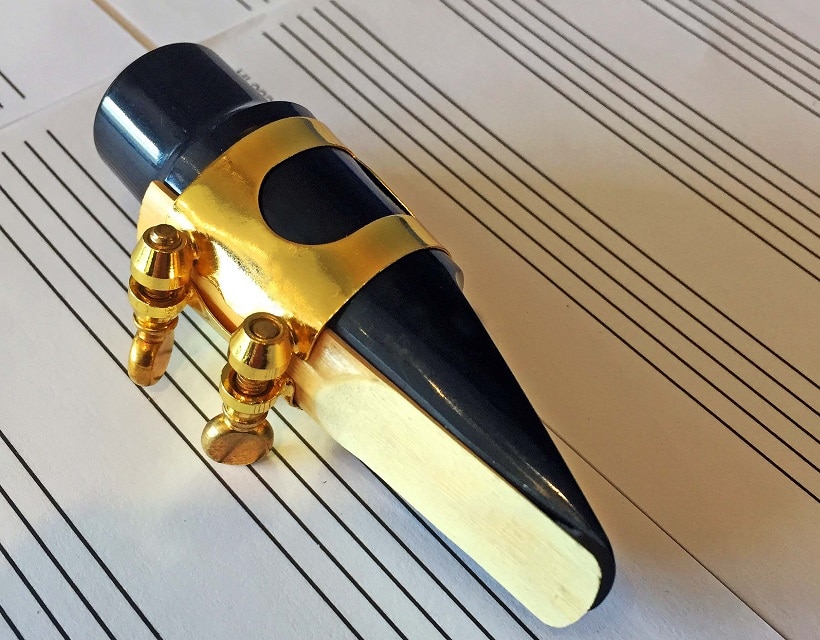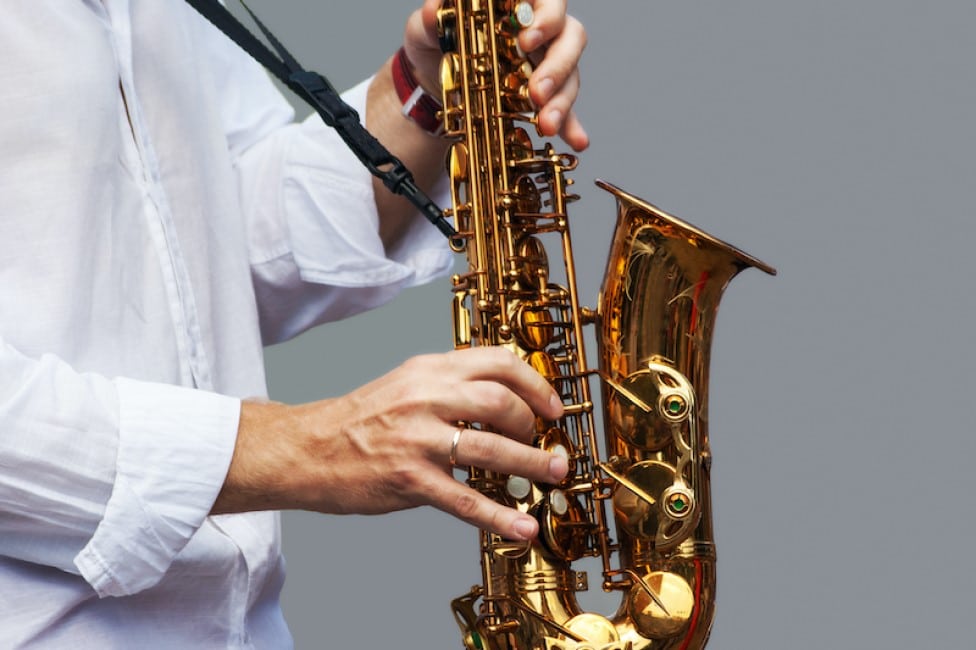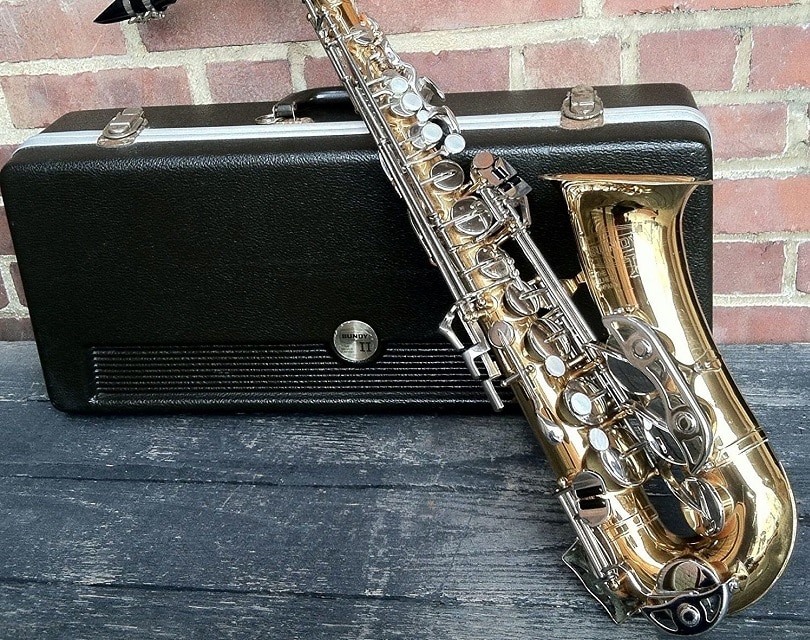Soprano saxophone distinction
Before moving to the factors to consider when buying a soprano sax, it is first important to understand what a soprano saxophone is. Some people consider a soprano saxophone to be a defiant voice to the contemporary symphonic band or jazz ensemble. Soprano saxophones vary considerably to alto and other types of saxophones. Their characteristics also depend on the brand that you choose and this guide offers an honest review of some of the top features of soprano saxophones.
The price of the soprano sax
 Price considerations come into play when making any important decision. Ideally, your budget for purchasing a soprano sax should depend on your level of playing the saxophone. Are you a musical novice that just got into the industry? Going with our budget pick, Jean-Paul USA SS-400SP, may not be such a bad idea. On the other hand, if you are a professional musician with lots of years under your belt, then a professional sax such as the Yamaha Custom YSS-82Z may be suitable.
Price considerations come into play when making any important decision. Ideally, your budget for purchasing a soprano sax should depend on your level of playing the saxophone. Are you a musical novice that just got into the industry? Going with our budget pick, Jean-Paul USA SS-400SP, may not be such a bad idea. On the other hand, if you are a professional musician with lots of years under your belt, then a professional sax such as the Yamaha Custom YSS-82Z may be suitable.
Consider the following features to choose the perfect soprano sax
You have finally decided to buy a soprano sax. What’s next? Well, there are a few things to keep in mind. Here are some of them.
Straight or curved?
Do you want a straight or curved neck? You are probably wondering what difference it makes. If you decide to get a curved neck will give you darker tones if that is what you want. A straight neck, on the other hand, offers a more direct sound. Sometimes, you may not be satisfied with the tone you are getting but still want to keep the instrument. In such a case, you can get a new neck, which will change both the sound and responsiveness of your soprano sax.
Materials and weight
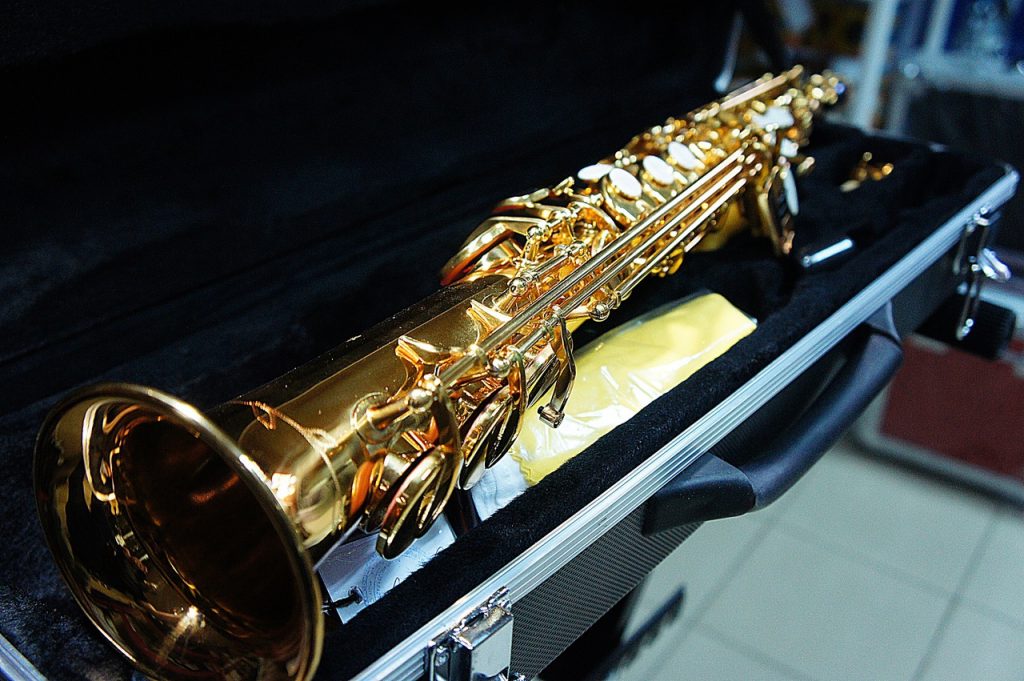
Many saxophones around the world are made with yellow brass bodies. It is also not uncommon to find saxophones, bells, or even necks made from copper, bronze, and sometimes silver. These materials are different and may add to the cost of the sax, darken the tone or offer a more professional look to the instrument. They also add to the overall weight of the instrument.
Finish
The finish determines the outside look and design of the instrument. For most saxophones in the market today, you should expect a clear lacquer finish. However, you can also choose from a wide array of alternative finishes. These include a silver plate finish, vintage finishes, nickel-plate finishes or colored pigmented lacquers.
Keys Quality
The quality and fit of the keys play an important role in the final output of music from your soprano sax. Are your keys customized to fit your arms or fingers? Modern saxophones are fitted with ergonomic keys, which make playing the instrument a breeze.
Mouthpiece
 The mouthpiece is what you use to blow into the saxophone when you want to make some notes. Different mouthpieces are depending on the type of instrument. For example, there are mouthpieces for alto sax, bari, soprano, and tenor saxophones. Buy the right mouthpiece for your soprano sax to ensure it fits and produces great sound. It is also important to keep your mouthpiece clean as it can be unsanitary if not maintained regularly.
The mouthpiece is what you use to blow into the saxophone when you want to make some notes. Different mouthpieces are depending on the type of instrument. For example, there are mouthpieces for alto sax, bari, soprano, and tenor saxophones. Buy the right mouthpiece for your soprano sax to ensure it fits and produces great sound. It is also important to keep your mouthpiece clean as it can be unsanitary if not maintained regularly.
Player’s level
Are you a rookie sax player? It is not common to find anyone starting with sopranino before learning the alto or tenor sax. Probably because being a professional soprano sax player is quite difficult. Manufacturers of saxophones put a lot of attention into producing instruments at each player level. If you are a starter, there are student saxophones such as the P. Mauriat Le Bravo that are not only affordable but will help you develop your skills. Intermediate saxophones are in-between the level of a student and a professional. It s not easy to distinguish between an intermediate and professional sax since the key work and action may feel the same. However, intermediate saxophones do not produce the full tones that professional ones do. When you purchase professional saxophones like the Yamaha Custom YSS-82Z, you will notice a significant shift in tone, intonation, and response to the instrument. You are also likely to find a lot of handwork on professional saxophones. Think of a beautiful hand engraving or hard-hammered keys on the bell.
Key and sound
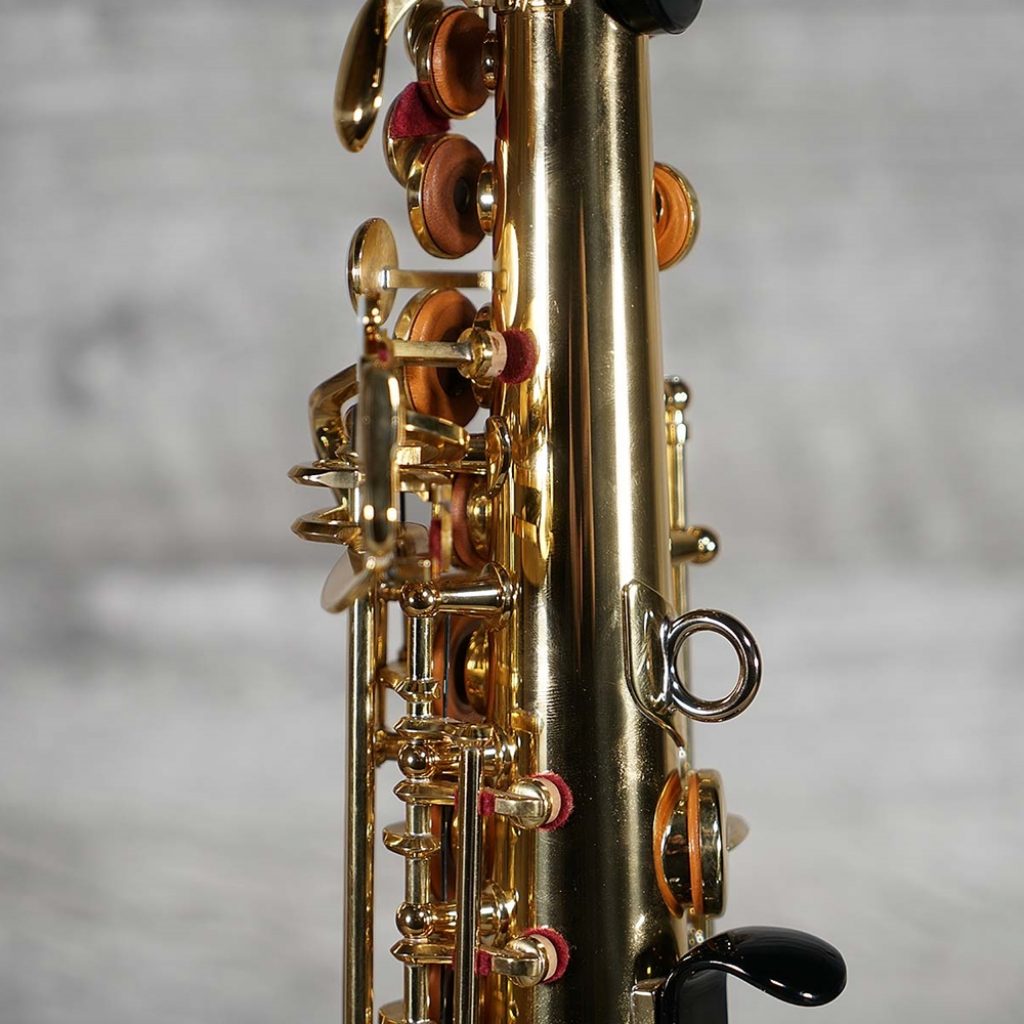 A regular sax (well, most of them) has the high F# key although you can play without it. Soprano saxophones have been including a high G# key, but you can still play without it. Some brands such as Selmer include a C# resonance key if you want a clear middle C#.
A regular sax (well, most of them) has the high F# key although you can play without it. Soprano saxophones have been including a high G# key, but you can still play without it. Some brands such as Selmer include a C# resonance key if you want a clear middle C#.
Consider the brand
There are popular brands that are known to produce magnificent saxophones since time immemorial. Selmer saxophones are for the discerning saxophonists. These brands have a longstanding tradition of deft sound, excellent craftsmanship, and smooth finishes. Yamaha has grown a significant following in the recent past too. Pricing, sound and even appearance are what influence the growing number of Yamaha aficionados. The upside to choosing an established brand is that you are guaranteed of a good quality sax.
Warranty
You obviously want a guarantee that the product you purchase is in mint condition. After all, you can’t know the full condition of an instrument unless you use it for some long period. The Jean-Paul USA SS-400SP has an impressive lifetime warranty while the Yamaha Custom YSS-82Z comes with a 5-year full warranty.
Accessories
 Soprano saxophones also come with various accessories. Some models, such as the Selmer SSS280R La Voix II come with protective cases. This model also comes with treated leather pads, professional spring tension, and adjusting screws. These accessories can improve your playing experience and the saxophone you choose should come with different accessories.
Soprano saxophones also come with various accessories. Some models, such as the Selmer SSS280R La Voix II come with protective cases. This model also comes with treated leather pads, professional spring tension, and adjusting screws. These accessories can improve your playing experience and the saxophone you choose should come with different accessories.
Soprano sax playing tips
The soprano sax is quite versatile; it can easily move from the orchestra to the jazz band. That said, adopting the right technique is essential. Here are a couple of tips to help you play the soprano sax well.
- Achieve the perfect embouchure. You should practice consistently to learn the proper embouchure, which is neither too loose nor too tight.
- Make sure the instrument is in tune. Instead of using the lips to bring a note to tune, adjust the mouthpiece instead.
- Hold the sax right. Unless it is a curved neck, you should hold it at about 30 to 45 degrees and the position should not change.
- Close the keys completely. This may seem like a basic tip, but failing to seal the openings will make your sound breathy and out of tune.
- Extended techniques. As you continue learning, you will be exposed to some advanced techniques. You should only practice them if the basics are mastered.






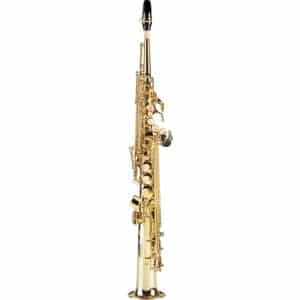
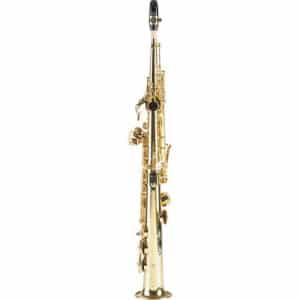
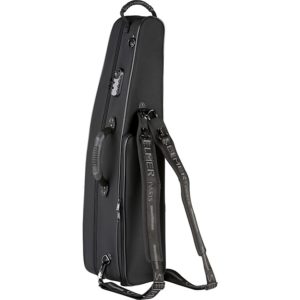
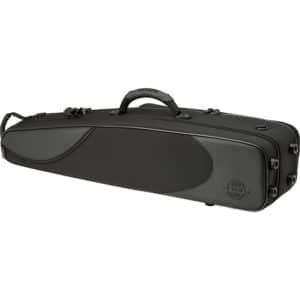
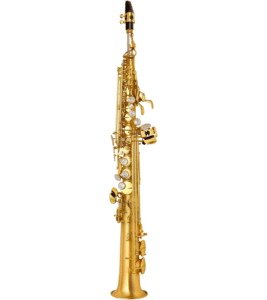
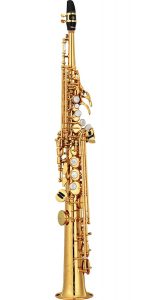


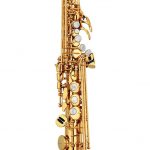

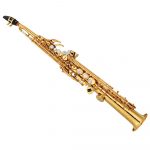
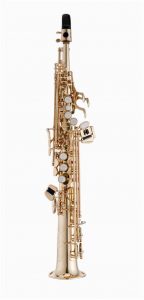
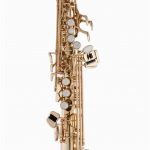


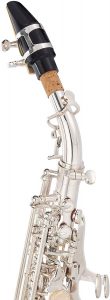
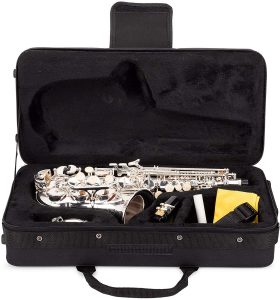
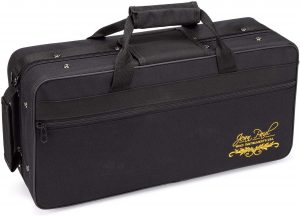

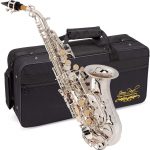
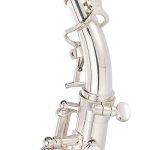
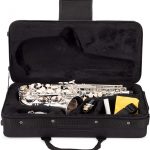
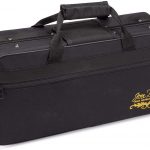
 Price considerations come into play when making any important decision. Ideally, your budget for purchasing a soprano sax should depend on your level of playing the saxophone. Are you a musical novice that just got into the industry? Going with our budget pick,
Price considerations come into play when making any important decision. Ideally, your budget for purchasing a soprano sax should depend on your level of playing the saxophone. Are you a musical novice that just got into the industry? Going with our budget pick, 
 The
The  A regular sax (well, most of them) has the high F# key although you can play without it. Soprano saxophones have been including a high G# key, but you can still play without it. Some brands such as Selmer include a C# resonance key if you want a clear middle C#.
A regular sax (well, most of them) has the high F# key although you can play without it. Soprano saxophones have been including a high G# key, but you can still play without it. Some brands such as Selmer include a C# resonance key if you want a clear middle C#. Soprano saxophones also come with various accessories. Some models, such as the
Soprano saxophones also come with various accessories. Some models, such as the 




